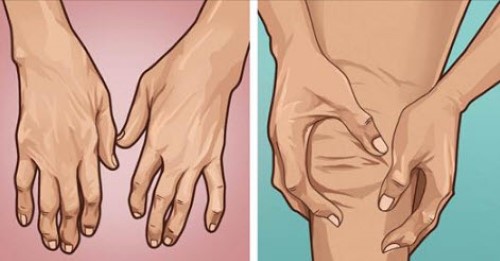Many people don’t realize that arthritis comes in over 100 different forms. Although some types of arthritis are rather rare, others are relatively common. This disease can lead to a number of issues, including joint pain and stiffness. In more severe cases, it can even be debilitating.
Although it may be common among people, especially as they get older, it does not need to be an issue for you. The permanent joint damage that could be caused by arthritis may often be stopped or slowed down considerably, just by recognizing the symptoms and taking action.

Here are 3 different types of arthritis that are most common.
1. Osteoarthritis
This is the most common type of arthritis, usually referred to as “wear and tear” arthritis. It typically happens to your joints over time but it can also happen due to damage from sudden trauma as well. Osteoarthritis is more likely to occur in people who are obese, because of the additional stress on their joints. It is most commonly seen in the hips, knees, spine and feet.
Symptoms
– Deep, aching pain
– Trouble dressing, combing hair, gripping things, bending over,
squatting, or climbing stairs. depending on which joints are
involved
– Morning stiffness for less than an hour
– Pain when walking
– Stiffness after resting
And our joint may be:
– Warm to the touch
– Swollen and harder to move
– Unable to move through a full range of motion
Treatment
The Arthritis Foundation says treatment for Osteoarthritis
are:
– Managing symptoms, such as pain, stiffness and swelling
-Improving joint mobility and flexibility which can be done with
therapy
– Maintaining a healthy weight
– Getting enough of exercise
2 Rheumatoid Arthritis
Rheumatoid arthritis (RA) is different from osteoarthritis. Rather than being caused by damage to the joint, it occurs because the body is attacking itself. It is referred to as an autoimmune disease and it can affect any joint in the body, at times with severe consequences. Rheumatoid arthritis may affect multiple joints at one time and the symptoms may appear suddenly or gradually.
Symptoms
– Rheumatoid nodules. These form in about 1 in 5 people, and
they usually form over joint areas that have a lot of pressure like
knuckles, elbows, or heels.
– Pain and stiffness
– Swelling in your hands, wrists, elbows, shoulders, knees, ankles,
feet, jaw, and neck.
– Fatigue
– Loss of appetite or weight
Treatment
– Nonsteroidal anti-inflammatory drugs (NSAIDs) are used to help
ease arthritis pain and inflammation Arthritis Foundation.
– Corticosteroid medications are quick-acting medications to reduce
inflammation.
– Disease-modifying antirheumatic drugs, or DMARDs, are drugs that
work to modify the course of the disease.
– Surgery is an option for people with RA whose mobility has been
severely limited.
3. Psoriatic Arthritis
More than likely, you have heard of psoriasis. It is a skin condition that causes patchy, raised and red skin along with inflammation and scales. According to the arthritis foundation, 30% of people who have psoriasis will at some point develop psoriatic arthritis (PsA). Like rheumatoid arthritis, it is an autoimmune disease. As your immune system attacks your healthy tissue, it leads to inflammation, stiffness and joint pain.
Symptoms
– Painful swollen joints
– Pitted or discolored fingernails
– Sausage-like fingers or toes
– Stiffness
– Tendon or ligament pain
– Skin rashes ( like those associated with psoriasis)
– Fatigue
– Reduced range of motion
– Eye problems like redness, or irritation
– Flares
– Psoriatic Arthritis is also closely linked with Crohn’s
Disease
Treatment
– Nonsteroidal anti-inflammatory drugs (NSAIDs) are used to help
ease arthritis pain and inflammation Arthritis Foundation.
– Corticosteroid medications are quick-acting medications to reduce
inflammation.
– Disease-modifying antirheumatic drugs, or DMARDs, are drugs that
work to modify the course of the disease.
What to Do If You See the Signs or Symptoms
If you see any signs or symptoms listed above, schedule an appointment with your primary health care provider. They will be able to determine if you have arthritis and the next steps to take in your individual case.
You can also look at the full list of different types of arthritis, available on the arthritis foundation website. They offer a number of tools and resources to help you in dealing with this disease as well.
Via: Remedy Daily
Make sure you share this important information with your friends on Facebook
